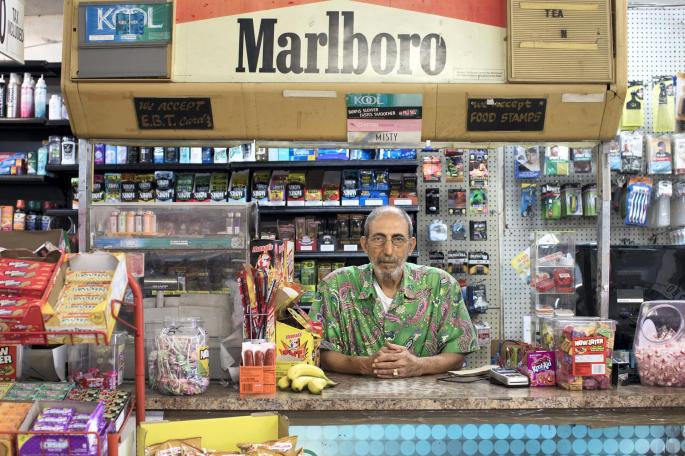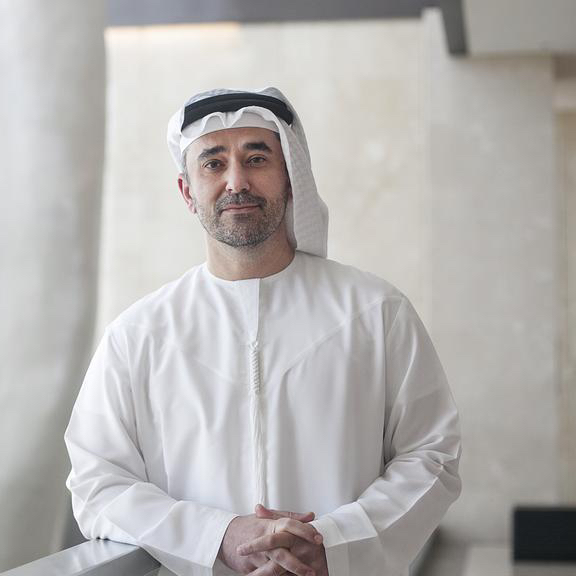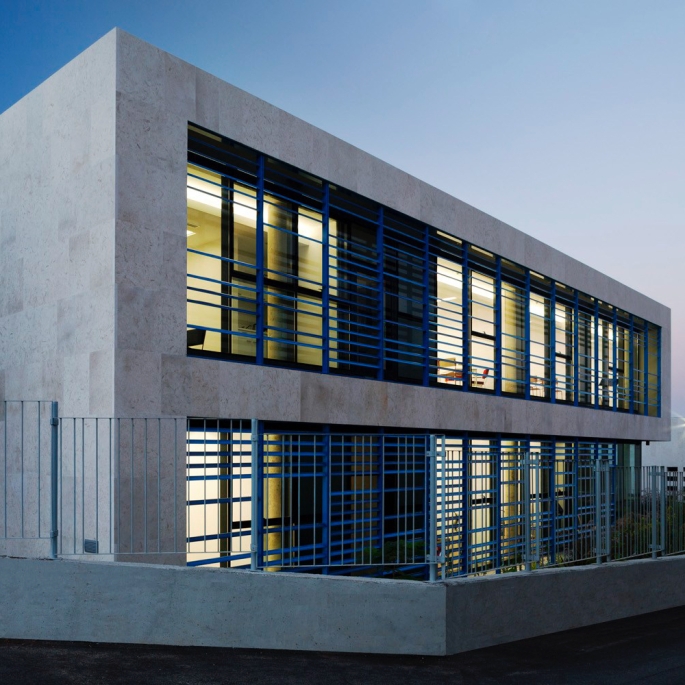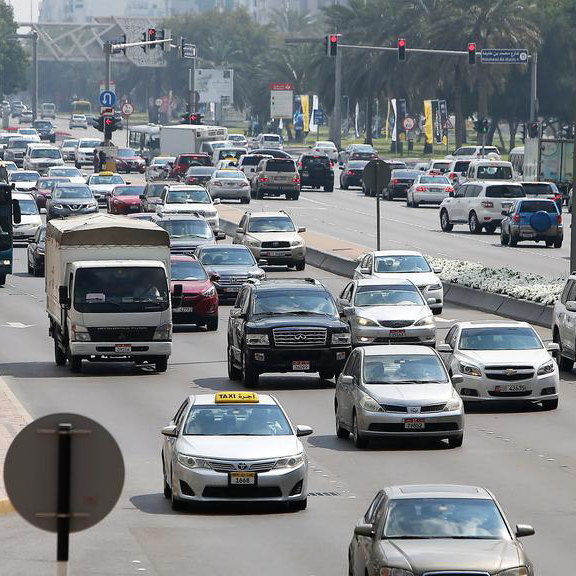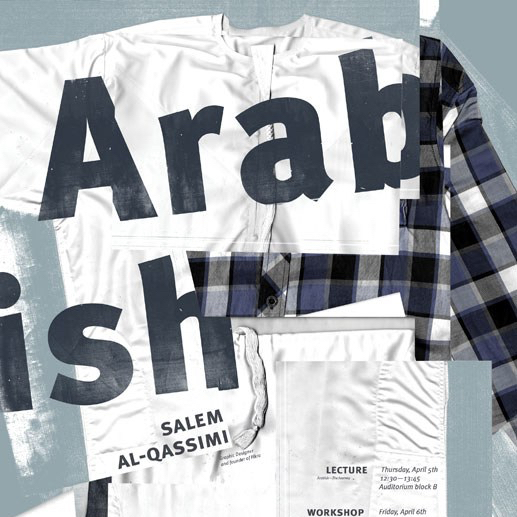Decades of sporadic violence in Gaza have inevitably left their mark on the urban landscape. Today, entire neighbourhoods stand in ruins, with some 18,000 homes destroyed or severely damaged and 100,000 Gazans left homeless.
“In the last decade, Gaza witnessed repeated catastrophes,” the Palestinian architect Elias Anastas explains. “The disasters are as random and as violent and as badly predicted as natural disasters, except that they have been much more frequent.
“In Gaza [however], the annihilation has become so frequent that the building, rebuilding and destroying are happening at the same time.”
For Muna Budeiri, the head of the housing and camp improvement unit at the United Nations Relief and Works Agency for Palestine Refugees in the Near East (UNRWA), the current need for swift action has to be tempered with careful consideration.
“Planning is usually a long and tedious process, but emergencies and conflicts require very quick solutions because people are homeless,” the Amman-based architect explains. “There is always a period where you need to create transitional housing for refugees before planning can begin, but even then it is very important for planners to be involved from the start.”
Budeiri’s understanding of the pressures and the pitfalls associated with the earliest phases of reconstruction is born of 20 years’ experience of working as an architect and a planner in the region’s refugee camps such as Jenin in the West Bank and Nahr Al Bared in northern Lebanon.
“In the early stages of the reconstruction of Jenin and even in the early stages of the reconstruction of Nahr Al Bared, there were suggestions that we use prototype buildings, with designs that were very easy and that we build them in a standard grid with roads and walkways, like a city from the 1950s.”
For Budeiri however, the inherent dangers in such an approach stem from the fact that it fails to take the culture, living habits and family bonds of the displaced persons into account. “Most of the Palestinian refugee camps are based on extended family housing and each plot has a house that has been vertically and horizontally extended to house the family itself.
“So, decisions made at early stages that come up with multi-storey or high-rise buildings to create higher densities and to make prototypes that make [reconstruction] quicker, all of these will affect the social fabric later on. These are issues that planners can provide solutions to at a very early stage.”
Last Sunday, the streets of Gaza filled with more than 430,000 children finally making their way back to school.
They are the lucky ones. According to the latest report by the UN Office for the Coordination of Humanitarian Affairs (OCHA), 501 children were killed in the recent conflict and estimates by the Palestinian Authority (PA) suggest that about half a million children no longer have a school to go to, either because of damage and destruction to their school buildings or because their schools are now being used to house displaced persons or refugees. Due to the severity of the situation, the start of the new school term had been delayed by two weeks.
However, for the pupils of Children’s Land, a kindergarten in the Bedouin village of Umm Al Nasser, there was no possibility of return.
The school, located just 600 metres from the security barrier that defines Gaza’s border with Israel, was one of 26 in Gaza that had been destroyed completely, razed to the ground by the Israel Defense Forces (IDF) during a devastating attack that also depopulated the village.
The school’s designers Mario Cucinella of Mario Cucinella Architects (MCA) and Alberto Alcalde of Architettura & Cooperazione (ARCo), only learnt of the kindergarten’s fate a month after the attack. “The Israelis came from the north to Erez and demolished everything,” Cucinella explains. “They came with bulldozers and they just took everything down.”
Cucinella admits that he was shocked by the news “but when we saw the pictures we were most sad for the community. These people were living at the very edge of society, a very small community of Bedouin, really living with nothing.”
Built using corrugated sheeting and timber and with walls made from sandbags filled with earth, the 120-pupil school and community centre had included six classrooms, a family counselling space, an infirmary and a community kitchen.
“When we opened the school it was a moment of joy for the community because they had the feeling, for the first time, that somebody was taking care of them,” the Italian architect explains.
“The problem was that there were no services for families with children aged between zero and five so the kindergarten was built to care for children who would have to play out in an environment that is very dangerous. This was the first time the kids had been able go to school and play in safety.”
Thanks to the simplicity of the centre’s design, the kindergarten took only a few weeks to build using unskilled labour from the local community and cost only Dh856,000 (€180,000) when it was completed in 2011.
Funded by the Italian ministry of foreign affairs and international cooperation, the project was coordinated by Vento di Terra, an Italian NGO. According to Cucinella, both the NGO and the ministry are already making assessments for the Umm Al Nasser kindergarten’s reconstruction.
“There was no reason to demolish [the school] but there are very good reasons to rebuild [it] and I think that the Cooperazione Italiana want to show that they are stronger than any war. We have to do this.”
A decade ago, in the unlikely setting of Santa Monica, California, Doug Suisman was surprised to find his attention turning to the seemingly intractable urban problems of one of the most troubled regions in the Middle East.
An experienced architect and urban planner, Suisman had been approached by the RAND Corporation, a US-based, not-for-profit think tank, and was given the task of developing a concept plan for a sustainable Palestinian urban future predicated on the existence of peace in the region and a viable Palestinian state.
Initially, the challenge seemed overwhelming, not least because RAND had given Suisman a deadline of six weeks. As Suisman remembers, the whole project seemed a rather unlikely prospect at the time.
“I said: ‘You must be kidding’ … You’re saying to me, take the world’s most intractable political conflict in a region that I don’t know, am not expert in and travelled to once 30 years ago and in six weeks you’d like me to come up with some kind of concept for housing and urban development. [RAND] said: ‘Yes, that’s about the long and short of it.’”
As early as 2002, RAND had assembled a multidisciplinary team of experts to work with Palestinians, Israelis and the international community to develop an in-depth and comprehensive nation-building plan to address the issues that might affect the peace associated with a successful two-state solution.
It was during this period that the need for a framework that addressed Palestine’s urban future became paramount in order to facilitate the state’s success.
“What would it need to be successful, that was really the question,” Suisman remembers. “Because the creation of a state was one thing, but no one wanted to create what would become a failed state.”
Unexpectedly, Suisman’s status as an outsider became his most useful aid; it allowed him and his team to consider the everyday – the topography of the land and the density of existing settlements – even as the raging Second Intifada made travel to the region impossible.
“We almost made the point of making it like any other urban design challenge. It made it easier but it also matched the problem, which was ‘let’s just assume that the political conflict had ended’.
“We were looking at ordinary things, like how people would buy their groceries in the morning; would they walk or would they get into a car; how would they get to school or a doctor or to a university.”
Having worked on numerous downtown city planning projects as well as a mass transportation system for Los Angeles, Suisman found that, at a certain level, planning for Palestine’s future away from the region and as a desktop exercise actually worked.
As part of an earlier study, RAND had identified the need for infrastructure to connect the cities of the West Bank to Gaza, an idea which led Suisman’s team towards a simple and striking concept for meeting the challenges of Palestine’s rapid urban growth – The Arc.
The benefits of the early introduction of efficient, fully integrated public transport and urban infrastructure was a lesson that Suisman had learnt from his experience in LA. One aim was an urban future free from the problems associated with a predicted influx of cars.
“In a sense, Palestine would leapfrog over the urban sprawl phase. They would jump past that, which would be a blessing, like missing an unpleasant adolescent phase of urban growth and just be grown up.”
For Suisman, the key to The Arc’s success lay in engaging with its intended audience, something that could only be achieved by developing the concept to a stage where it was sufficiently detailed to make sense to them – the politicians, planners and residents of Palestine.
To achieve this, Suisman made what was potentially a politically charged decision, to render his plans with the kind of detail that a wider public could get excited about. “We developed different schemes where people could potentially project themselves into these places and say: ‘Oh, that is what it would look and feel like in a prospective Palestinian state,’” he says.
“And, I think that was powerful in that the notion of a Palestinian state had remained such a political abstraction. So many Palestinians told us – and others involved – that for the first time they could see and envision what such a state would look like and feel like …”
Following the earliest phase of The Arc’s development, Suisman visited the Palestinian Territories some 13 times but he first crossed an Israeli checkpoint to present his plans to president Mahmoud Abbas in June 2005. The reception was positive, Suisman says, so much so that he continued to work with planners from the Palestinian Authority on The Arc’s development until 2011.
According to Suisman, the period was one of relative optimism. “It seemed plausible that the plan might help in some small way, just as a concept or as a guiding star.”
Although the Arab Spring brought work on the scheme to a standstill, Suisman is not entirely pessimistic: “At this moment, I am not optimistic that in the immediate future there is any prospect of bringing it back on the table, but I have been surprised before,” he says. “On at least five occasions, I thought it was dead and over, and someone came back to it, so it seems to have staying power.
“We certainly designed it that way … We felt that if the concept is clear and strong and bright enough, it can survive upheaval and changes of personnel and administration, in the way that any long-term urban plan must because otherwise, every plan gets thrown out by the next round of folks.”
Within the Palestinian Territories, Suisman believes that the plan has been used as a starting point for discussions on development that had not previously existed because of a fear that anything concrete might derail or curtail the outcome of negotiations. In one sense, however, Suisman’s Arc achieved a modicum of success, despite the fact that not a single spade of earth has been turned nor a foundation stone laid.
“As we talked to people, the one phrase that we heard again and again to our surprise – it was not anything we intended – was: ‘This gives me hope.’ We heard this from very senior Palestinian officials, from certain Israelis, from others in the region: ‘This gives me hope.’
“So, there was a kind of power in the idea, fleshed out, that seemed to inspire people. And that kept it going. People began to say to us, this is not just about the day after peace, getting these images out could actually help get to peace because it gives people an idea of what it might be like. It makes it plausible.”
Despite the recent agreement between the UN, the Palestinian Authority and Israel for the rebuilding of Gaza, there remains a lack of large-scale, long-term thinking about the future of the Territories, but for Suisman his experience with The Arc and in Palestine has made one thing certain. “When people dream of peace, they are dreaming really of very ordinary things and peace means being able to do very mundane things without fear.
“Most people aspire to just live a decent life for themselves and their families. And that’s how we developed it. Every day we got up and thought: ‘OK, how could life be made better on a daily basis in a prospective Palestinian state,’ and that’s what people responded to.”
Two Palestinian brothers, Elias and Yousef Anastas, form the core of AAU Anastas, a small architectural practice with offices in Paris and Bethlehem. The brothers are currently designing a new paediatric hospital in Bethlehem and new courthouses for the West Bank communities of Hebron and Tulkarem, but it is the links their works draw between architecture conducted at a small scale and the larger urban issues faced by the Palestinian Territories that have brought most attention to their work.
Given the situation in the Territories today, Elias Anastas agrees with the basic proposal that lies at the heart of the RAND Arc – that reconstruction needs to focus on major infrastructural renewal – but that is where their similarities end.
If The Arc can be characterised as a rare and well-intentioned attempt to propose a large-scale, long-term solution to Palestine’s urban problems, it does so, necessarily, from the outside.
Despite Suisman’s long experience as an urban designer and many visits to the region, The Arc also has no option but to be an exercise in strategic urban planning conducted from the top-down.
As Palestinians in the West Bank, however, the Anastas brothers command an insider’s knowledge of their own heritage and culture and begin at the opposite end of the planning spectrum, from the bottom up, with the individuals and the buildings that form the DNA of successful neighbourhoods.
When it comes to talking about Gaza, however, Elias Anastas insists that he is also an outsider. “It’s quite complicated for us as Palestinians living in the West Bank to have a correct assessment about the priorities for Gaza. We are physically completely separated from Gaza – I have never been there – and a majority of my generation living in the West Bank are not allowed to go there.”
What divides Elias Anastas’s approach from Suisman’s most profoundly, however, is a fundamental question of scale. For him, it is the inability to conceive of an appropriate sense of scale, or agreed borders, that has prevented local architects and planners from taking a longer-term perspective when thinking about Palestine’s urban future.
“Usually, the planning of cities is connected directly to a territory and a limit, whereas in Palestine, the recognised 1967 borders are infringed by the path of the segregation wall,” he explains.
“This means we cannot count on them as a base on which to plan. How can we plan for these disconnected cities without knowing or having a territorial limit? It makes any planning on the Palestinian side impossible.”
This adherence to a smaller scale can be understood most clearly in the AAU design for the Bethlehem branch of the Edward Said National Conservatory of Music. In 2007, AAU won a competition to design the new community centre and in 2012 the conservatory was built on land donated by the municipality of Beit Sahour, east of Jerusalem.
Both the conservatory and its adjacent neighbourhood, a form of outdoor souq, can be understood as a contemporary reinterpretation of traditional Palestinian architectural features and urban forms and as an attempt to envision a new, nuanced, form of Palestinian future.
Clad in traditional Sour Ma’in stone from a nearby quarry, the conservatory also features external louvres over its windows that reference traditional mashrabiya, and a central plaza, or hosh, inspired by the communal, semi-private courtyards that were once an important feature of rural Palestinian homes.
Not only does this contemporary hosh act as a new semi-public open space for both the students at the conservatory and the residents of Beit Sahour, but it also helps as a cooling mechanism for the central plaza, reducing ambient temperatures by one or two degrees.
“The project started at the scale of the music conservatory but gradually it grew into an urban form that enabled us to understand and question the process of city construction at the local scale,” he explains.
The parcel of land adjacent to the conservatory was originally intended to be a public open space, but as construction began the local municipality changed its mind and wanted to create a mall or a commercial centre immediately in front of the new conservatory’s hosh.
In response, AAU made a counterproposal which aimed to balance the outward-looking character of the conservatory’s central plaza with the municipality’s desire for an adjacent commercial scheme. AAU achieved this with a plan that aligned the pedestrian street of the new outdoor souq with the central hosh of the new conservatory, reinforcing and expanding the neighbourhood’s public realm while visually connecting the conservatory with the city in the process.
The result was an expanded design not just for a building but for a neighbourhood, something Elias Anastas refers to as an “urban fragment”, that not only reflected the culture and heritage of the traditional Palestinian city, but which also responded to contemporary urban issues and demands.
“We wanted to think about the future of the city in an inclusive manner, so we involved the citizens, the municipality, bricklayers and the engineers in a conversation and a process that made our design feasible,” the architect explains.
This strategy of inclusion not only allowed the brothers to gain acceptance for their design and make it workable, it also helped them to persuade the local municipality to maintain many of the areas around the conservatory as public open spaces.
Elias Anastas admits this is no easy task in the occupied territories. “People have a lack of trust in public spaces and so, even at the municipal level, it’s not easy to try to persuade them to keep a space open for the public in the evening. Public space became associated with expressions of power so today, public spaces are not perceived as places where you can have confidence.”
If AAU’s conservatory attempts to reconstruct an idea of contemporary public space in Palestine, so too does another AAU project, Stonesourcing Space, an experimental stone pavilion created by Yousef Anastas. A contemporary reinterpretation of the mounteer, a type of refuge or shelter traditionally found throughout the Palestinian countryside, Stonesourcing Space was first constructed in Bethlehem’s Nativity Square in September 2013.
Like the Edward Said National Conservatory of Music, the Anastas brothers see their pavilion as an “architecture of resistance”. The aim of this temporary structure is to encourage Palestinians to reclaim, occupy and redefine public space in ways that move beyond the terms of surveillance, control, security and protest.
The pavilion’s resistance stems from its ability to introduce the notion of exhibition, discussion, inquiry and play in Palestinian public space by virtue of its location and existence.
For the Anastas brothers, however, there is an extra dimension to Stonesourcing Space’s resistance. Each time a pavilion is erected, it becomes a symbolic marker, like some contemporary cairn or a 3-D version of a graffiti artist’s tag, that acts as a mark and a reminder of property ownership and a symbolic act of resistance to the path and the existence of the Israeli West Bank Barrier.
“As Palestinian architects,” Elias Anastas explains, “our challenge is to develop urban forms and construction techniques that can evolve and develop into the urban fabric of the future Palestinian city.
“As time passes, we are more and more persuaded that an architecture of resistance has a real place in solving the complex territorial reality in Palestine [but] I think in order to achieve peace, an architecture of resistance should contribute to the emancipation of the Palestinian population.
“To achieve peace, the Palestinian population must be emancipated.”
This article was originally published in The National in 2014

